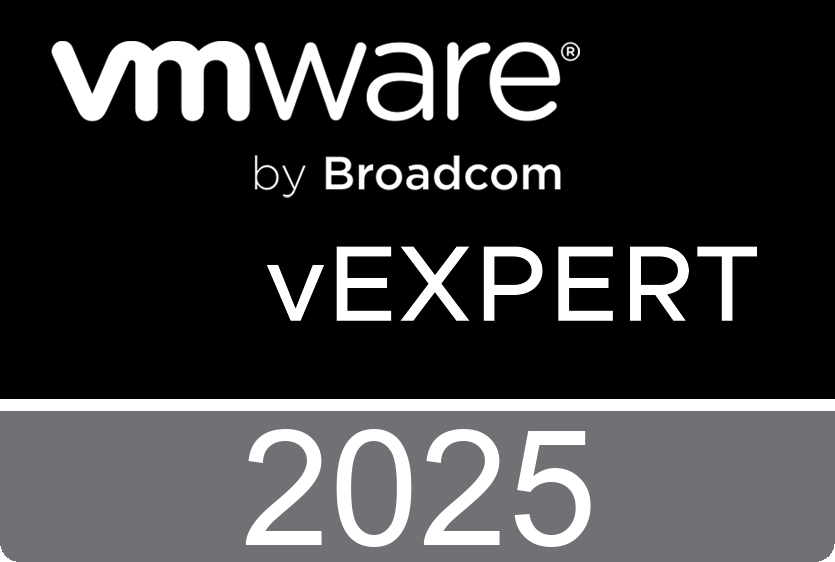The automatic and unattended installation of virtual machines can be achieved with several techniques. In this series, I´ll show the approach of using CloudInit together with VMware Aria Automation Orchestrator. This will be realized by the use of Guest OS Customization of the specific VM.
First, we need to prepare a VM which will be used as a template later.
To do so perform a basic installation of the OS and apply the changes for the specific OS and version.
In this post the following linux distributions are covered.
- Ubuntu Server 22.04 LTS
- Red Hat Enterprise Linux 9.3
Ubuntu Server 22.04 LTS
For this guide, I´ve installed a minimized Ubuntu Server based on version 22.04.2
The used install media was “ubuntu-22.04.2-live-server-amd64.iso”.
During the setup, the installation of any updates has been skipped.
When the installation is done login to the newly created VM via SSH or VMRC. Now you have to modify one file and perform some other commands.
The minimized installation is missing the open-vm-tools package. Without it cloud-init cannot gather the Guest OS Customization data.
sudo apt-get install open-vm-toolsAfter the installation of the open-vm-tools we have to delete two files.
sudo rm -f /etc/cloud/cloud.cfg.d/99-installer.cfg
sudo rm -f /etc/cloud/cloud.cfg.d/subiquity-disable-cloudinit-networking.cfgThen we append one line to /etc/cloud/cloud.cfg
sudo echo "disable_vmware_customization: false" >> /etc/cloud/cloud.cfg
After those changes are made we have to clean the system and tell cloud-init to run during the next boot.
sudo /usr/bin/cloud-init clean --logsNow you can shutdown the VM and convert it to a template.
Red Hat Enterprise Linux 9.3
For this guide, I´ve installed a “Minimal Install” RHEL9 based on version 9.3.
The used install media was “rhel-9.3-x86_64-dvd.iso”.
During the setup, the installation of any updates has been skipped and the system was not registered with Red Hat.
After the VM has been deployed we´re going to prepare it for cloud-init.
First, we check if the open-vm-tools have been installed (which should be the case).
rpm -qa | grep open-vm-tools
You should see something like “open-vm-tools-12.2.5-3.el9_3.x86_64” on the console. If not you have to install it manually from the source media.
Due to the selected “Minimal Install” cloud-init is not installed and as we don´t want to register our template with Red Hat, we have to manually install it and all the dependencies from the source media. First, check that the iso-file is still in your virtual CD-drive and connected to your VM.
Second, we mount the DVD to /mnt.
mount /dev/cdrom /mntThird, we install all the needed packages, beginning with the dhcp tools.
rpm -ivh /mnt/BaseOS/Packages/dhcp-client-4.4.2-19.b1.el9.x86_64.rpm /mnt/BaseOS/Packages/dhcp-common-4.4.2-19.b1.el9.noarch.rpm /mnt/BaseOS/Packages/ipcalc-1.0.0-5.el9.x86_64.rpmThen some python packages
rpm -ivh /mnt/AppStream/Packages/python3-configobj-5.0.6-25.el9.noarch.rpm /mnt/AppStream/Packages/python3-jinja2-2.11.3-4.el9.noarch.rpm /mnt/AppStream/Packages/python3-jsonpatch-1.21-16.el9.noarch.rpm /mnt/AppStream/Packages/python3-netifaces-0.10.6-15.el9.x86_64.rpm /mnt/AppStream/Packages/python3-oauthlib-3.1.1-5.el9.noarch.rpm /mnt/AppStream/Packages/python3-prettytable-0.7.2-27.el9.noarch.rpm /mnt/AppStream/Packages/python3-pyserial-3.4-12.el9.noarch.rpm /mnt/AppStream/Packages/python3-babel-2.9.1-2.el9.noarch.rpm /mnt/AppStream/Packages/python3-markupsafe-1.1.1-12.el9.x86_64.rpm /mnt/AppStream/Packages/python3-jsonpointer-2.0-4.el9.noarch.rpm /mnt/AppStream/Packages/python3-pytz-2021.1-5.el9.noarch.rpm /mnt/AppStream/Packages/python3-jsonschema-3.2.0-13.el9.noarch.rpm /mnt/AppStream/Packages/python3-attrs-20.3.0-7.el9.noarch.rpm /mnt/AppStream/Packages/python3-pyrsistent-0.17.3-8.el9.x86_64.rpmAnd finally the cloud-init package
rpm -ivh /mnt/AppStream/Packages/cloud-init-23.1.1-11.el9.noarch.rpm
After the installation, we have to check /etc/cloud/cloud.cfg for the correct settings. In my case the settings were already correct, the output of the following command must be “disable_vmware_customization: false”, if not you have to change it.
cat /etc/cloud/cloud.cfg | grep vmware
At the end of the OS preparation we run the cleanup command
/usr/bin/cloud-init clean --logsNow we can shutdown the VM and convert it to a template.
When you have prepared your desired OS you can continue with Part2 of the series.

Leave a Reply